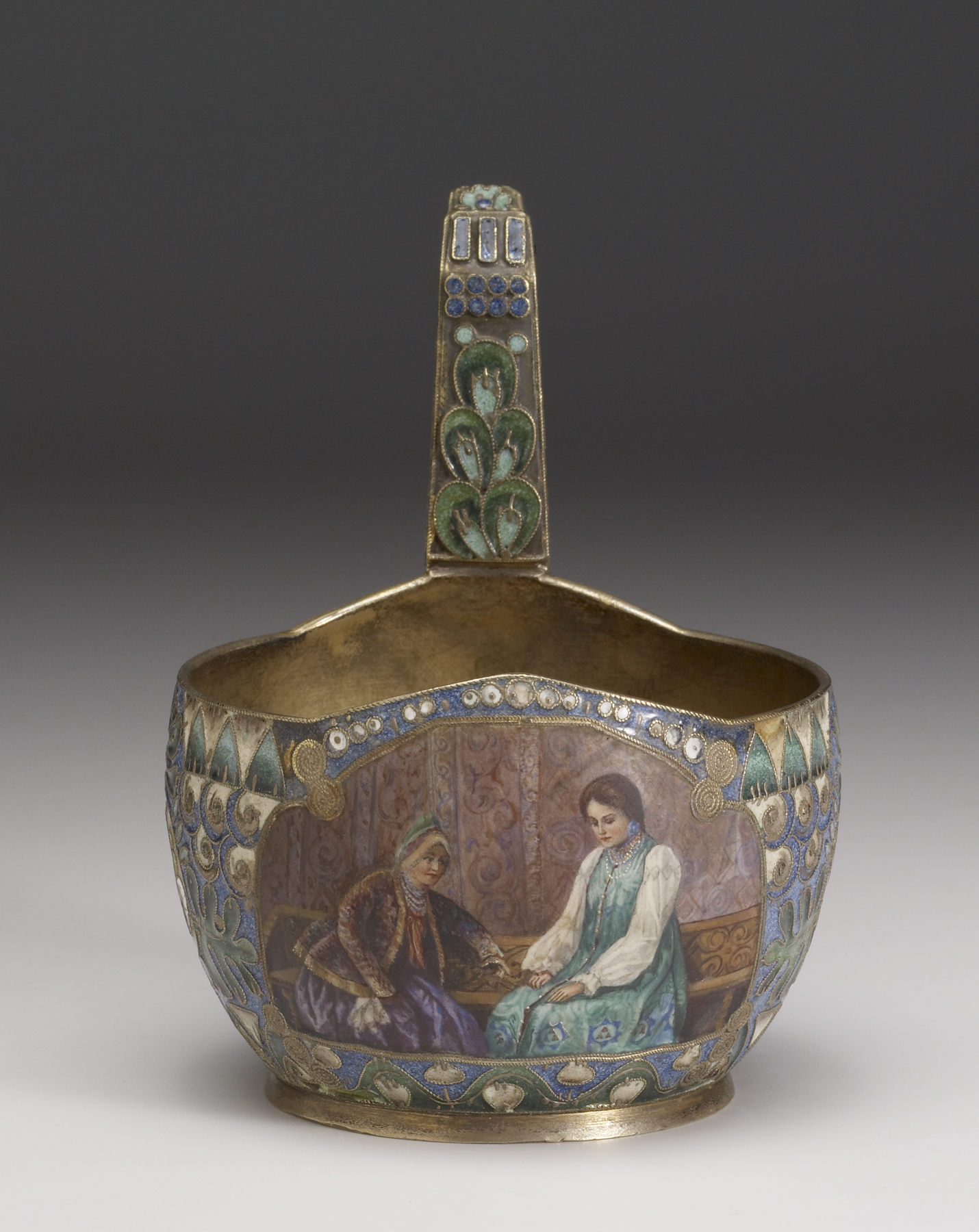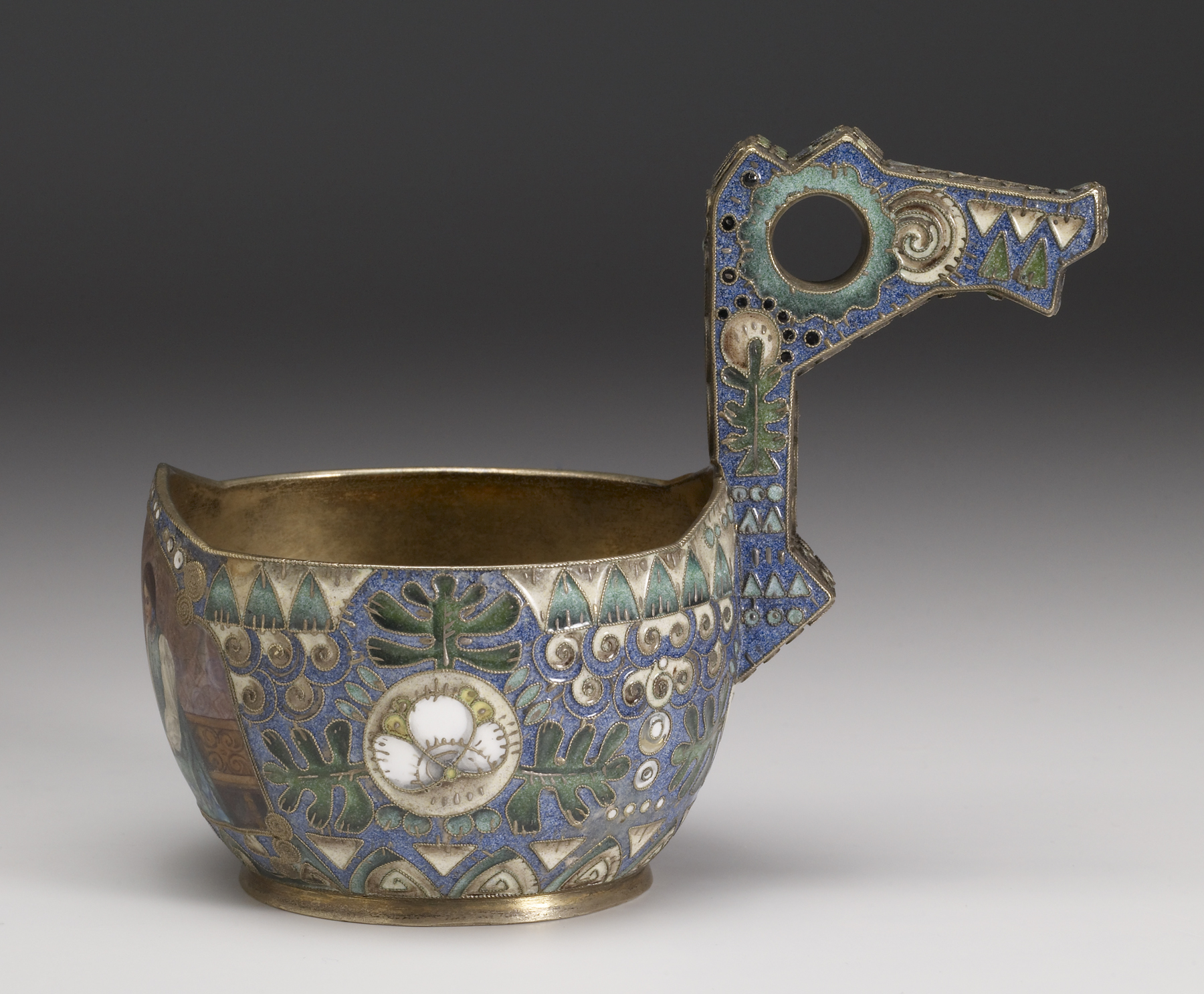Kovsh: Two Women
(18th and 19th Centuries )
Within a cartouche on the front face of the kovsh is a scene painted in matte enamel portraying an older boyarina counseling a younger woman who is seated on a bench. The women's' lavish costumes and jewelry as well as the brocaded fabric on the background wall are indicative of their social status. Although the nature of the subject is in keeping with Konstantin Makovskii's matrimonial paintings, the actual source for this composition has not been identified.
The sides of the kovsh are decorated with Rückert's characteristic motifs: triangles, spirals, trees, and abstract circular blossoms in his late muted colors: grayish blue, green, white and brown.
The handle's angular shape may have been inspired by an early wooden kovsh. Its decoration adheres to the same color schemes and patterns used in the bowl although handle's upper and lower edges are executed in raised filigree enamel over a stippled gilt ground.
Inscription
Provenance
Provenance (from the French provenir, 'to come from/forth') is the chronology of the ownership, custody, or location of a historical object. Learn more about provenance at the Walters.
Jean M. Riddell, Washington, D.C. [date and mode of acquisition unknown]; Walters Art Museum, 2010, by bequest.
Geographies
Russia, Moscow (Place of Origin)
Measurements
H: 1 7/16 x W: 1 5/16 x D: 2 5/8 in. (3.6 x 3.33 x 6.6 cm)
Credit Line
Bequest of Mrs. Jean M. Riddell, 2010
Location in Museum
Not on view
Accession Number
In libraries, galleries, museums, and archives, an accession number is a unique identifier assigned to each object in the collection.
In libraries, galleries, museums, and archives, an accession number is a unique identifier assigned to each object in the collection.
44.902






